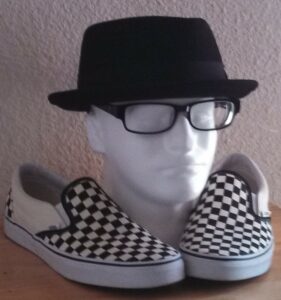The Unknown Opponent
This is a post about playing tennis against an opponent you have never seen play. This is a fairly common occurrence if you are a tournament player or play tennis socially on a ladder. What are you supposed to do when you want to defeat such an opponent? I have a few suggestions.
The first thing I would recommend is to hit the ball down the middle of the court during warmups. You will quickly find out if your opponent prefers to hit a backhand or forehand. If they continually gravitate to one shot over the other, you have gained valuable information before the match starts. And you can trust me, they won’t hit the ball on their weaker side if they have a choice. Your opponent will not be practicing their weaker shots in warmups; they will go with their preferred shot.
The next thing you should do is look at the grips they are using. If your opponent has a full western grip on the forehand side, you now know that they are susceptible to low balls on that side. And how about the backhand? Do they have any hitches in that stroke that you could exploit?
Where is your opponent standing with respect to the baseline? Are they far behind it, implying that they are a passive, counter-punching type of player. If they are half volleying their groundstrokes as they hug the baseline, you can bet they are more aggressive. This is more valuable information that you can attain before the match starts.
What about your opponent’s footwork? Are they taking those extra, small steps good players take to adequately address the ball? Are they lunging at the ball? Do they seem to be off-balance as they recover from hitting a shot?
How are they at the net? Do they only want a couple volleys, and then they are done? Many players who camp out at the baseline act like they are irritated to come to the net during warmups. Pay particular attention to their overheads. Are they letting the ball bounce? Do they seem tentative in any way? Are they hitting the shot crisp and clean? If the shot seems weak, you can easily exploit it when play starts.
When it comes time to serve, take note of where the player stands when returning your serve. Are they way behind the baseline, or are they hugging it? Their position will give you some clues as to how they are going to play.
When you are returning their serve, pay attention to their toss. Is it consistent, or is it flying all over the place? Is it a high toss? If their toss is not consistent, there is a chance you will have trouble reading their serve. You can’t know where the player will hit it if they have no idea where it is going.
If the player is a good one, try to see if they are telegraphing the type of serve they will hit by the kind of toss they are using. A topspin serve might have a different toss than a slice serve. A player has to be very accomplished to use the same toss for the different types of serves they are capable of hitting. Unless you are playing a very good player, you can usually spot a thing or two that will help you out once play starts.
After warmups are done, a racket is spun, or a coin is tossed to determine who has the option of serving first. I always decline; I want to return. Your best chance to break serve might be the first game. Perhaps your opponent is not fully warmed up, or their nerves haven’t settled yet. If given a choice of sides, I always choose the side that is least affected by the sun. I want my opponent, in that first game, to have every possible disadvantage. If there is a chance the sun will come into play, I want the other player to have to deal with it as soon as the match starts. This is especially true if they are not wearing a hat and sunglasses.
These are just a few suggestions. You can do a lot more if you really want to get to know your opponent before the match starts. I have it on good authority that you can get an advantage in any match you play if you mow the lawn in your tennis shoes. Seriously, it works. During warmups, simply hit the first couple of balls high into the fence behind your opponent. After the second ball lands, profusely apologize to them and explain that you have been playing exclusively on grass for the last few months, and your timing is severely off. You will be inside the other player’s head for the duration of the match.
Finally, everyone reading this post needs to get their hands on the most remarkable tennis book I have ever read. That book is Winning Ugly by Brad Gilbert. Reading it will give you insight into how the author reached number 4 in the world with no real discernable weapon other than his enormous tennis brain. And I would certainly rather win ugly than lose elegantly. After you read his book, you will too.
